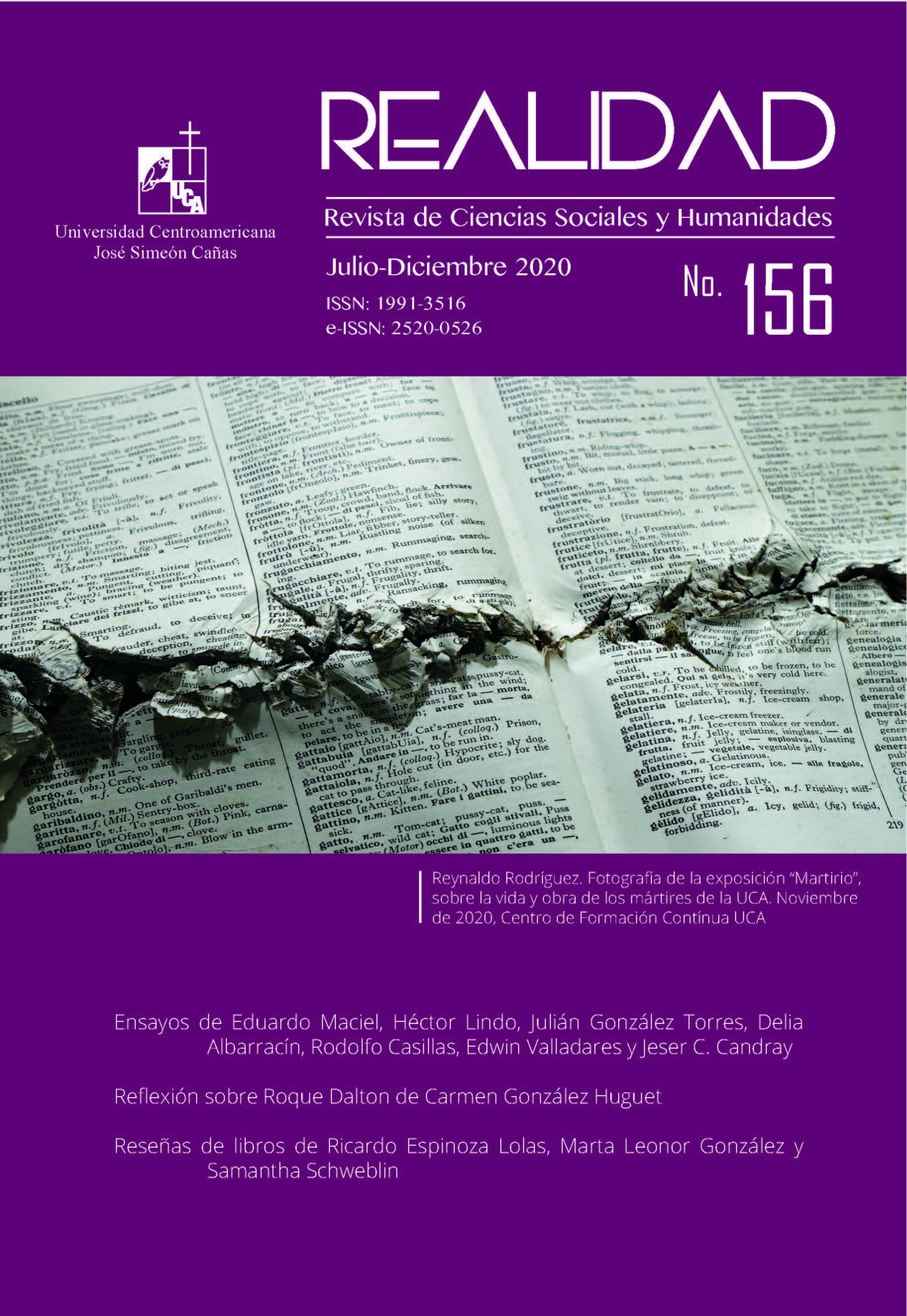Abstract
In El Salvador, the battle over memory is fought on multiple plains, one of them the creation of places of memory in the public space. Drawing on the perspective of aesthetic studies (especially Walter Benjamin) this article explores the battle over memory as represented in two monuments that emerged from the Salvadoran postwar period: The Monument of Reconciliation and the Monument of Memory and Truth. These monuments materialize two heuristic proposals about war that arise from opposing positions of power. To illustrate this contrast in power, I use two temporal allegories: January represents the heuristic supported by the post-war political elites (centered on the discourse of reconciliation and whose symbol is the Peace Accords); whereas May represents the heuristic thrusted by the civilian victims (a temporal allegory based on two scorched-earth operations in May 1980 and 1982, as well as on the resistance actions against the Reconciliation Law in May 2019).
Realidad: Revista de Ciencias Sociales y Humanidades No. 156, 2020: 5-33.

This work is licensed under a Creative Commons Attribution-NonCommercial 4.0 International License.
Copyright (c) 2020 Eduardo Maciel





